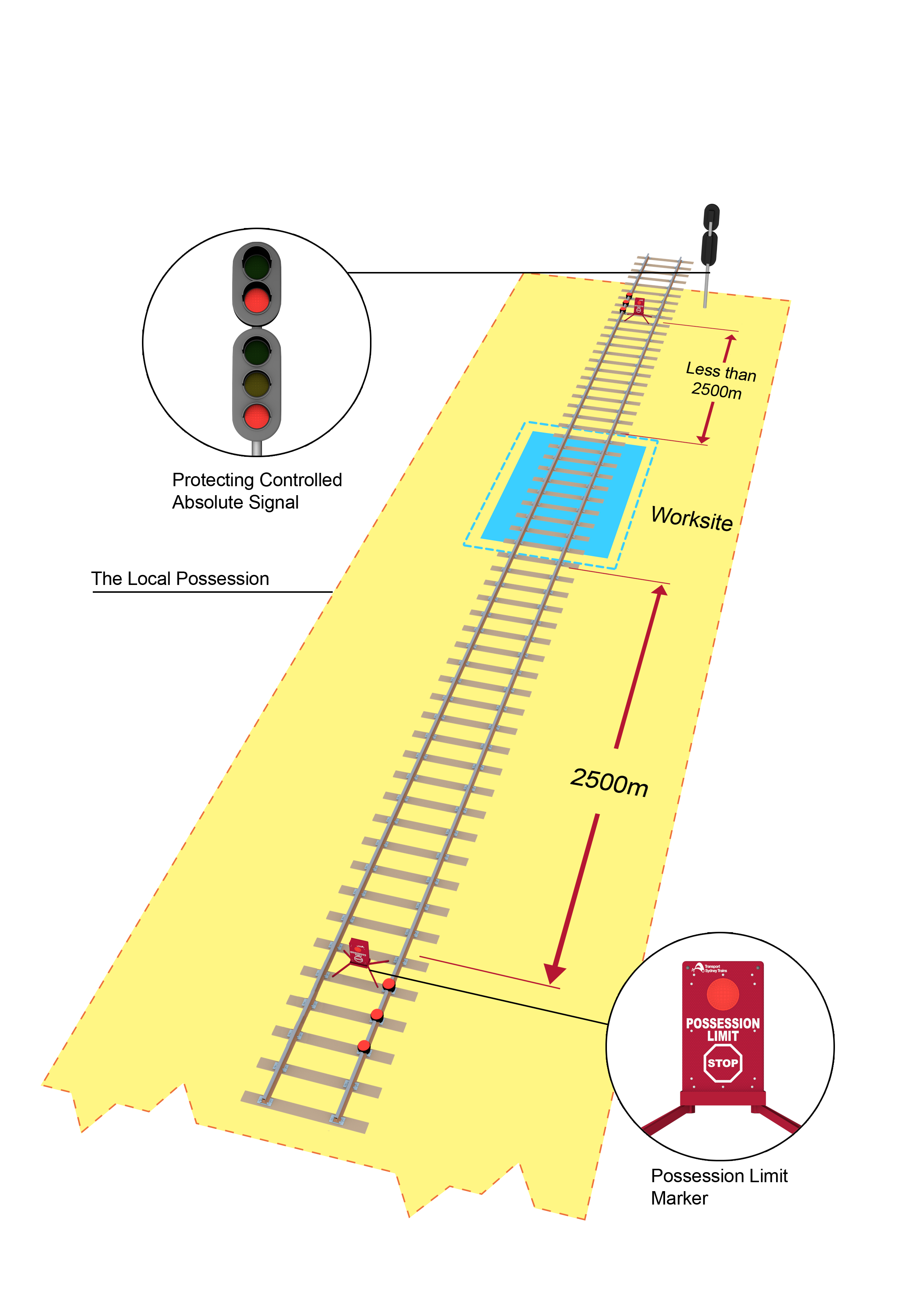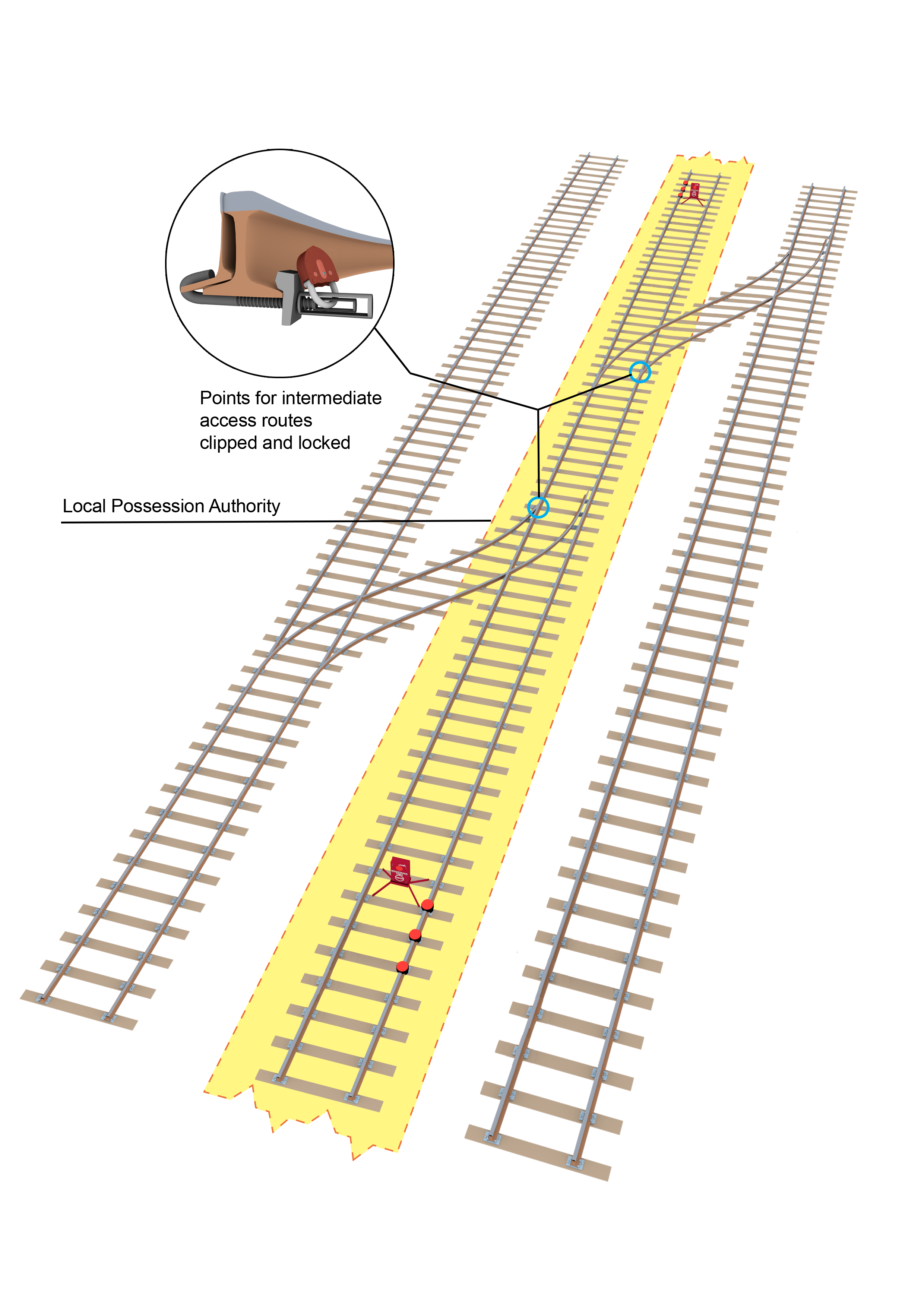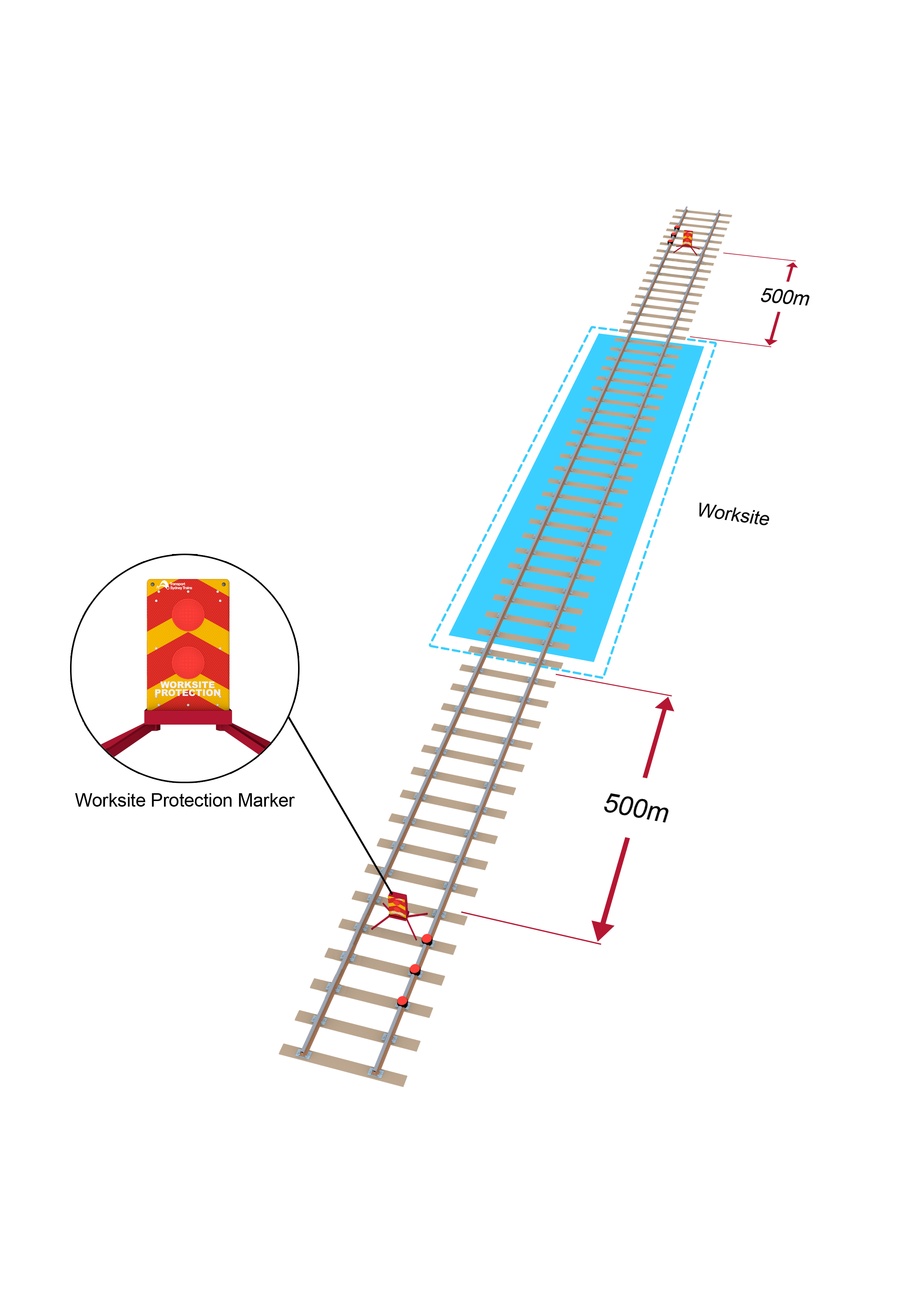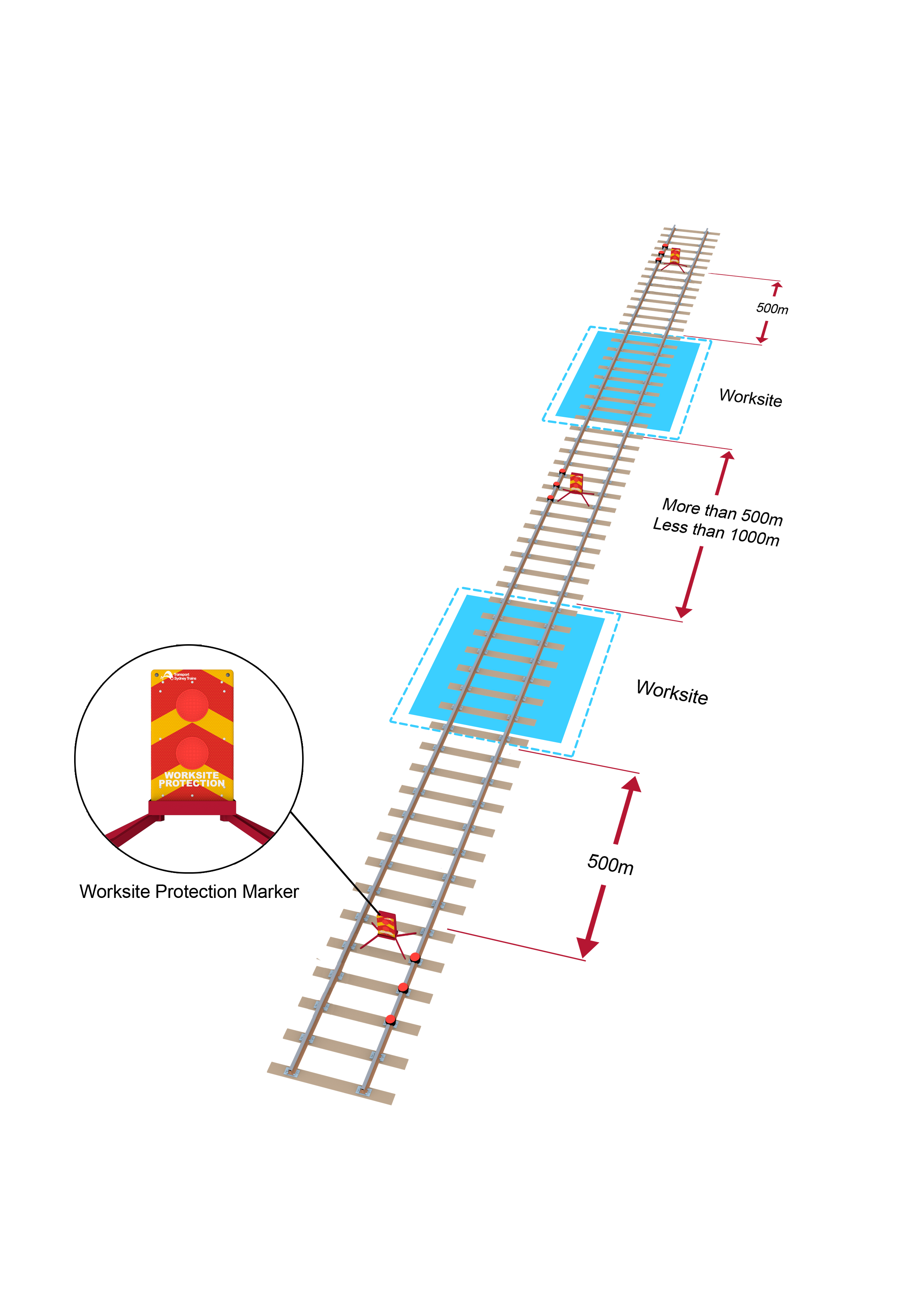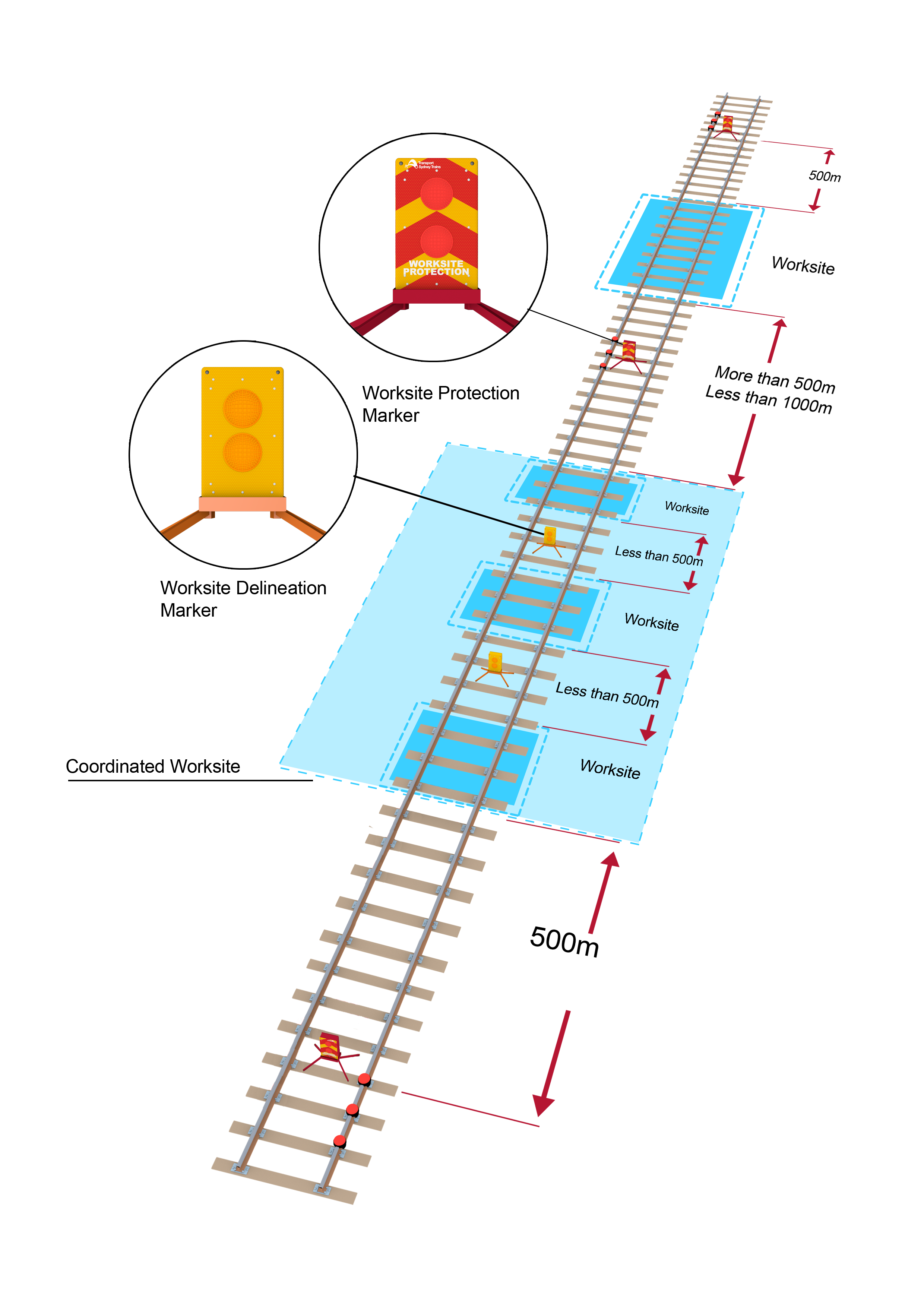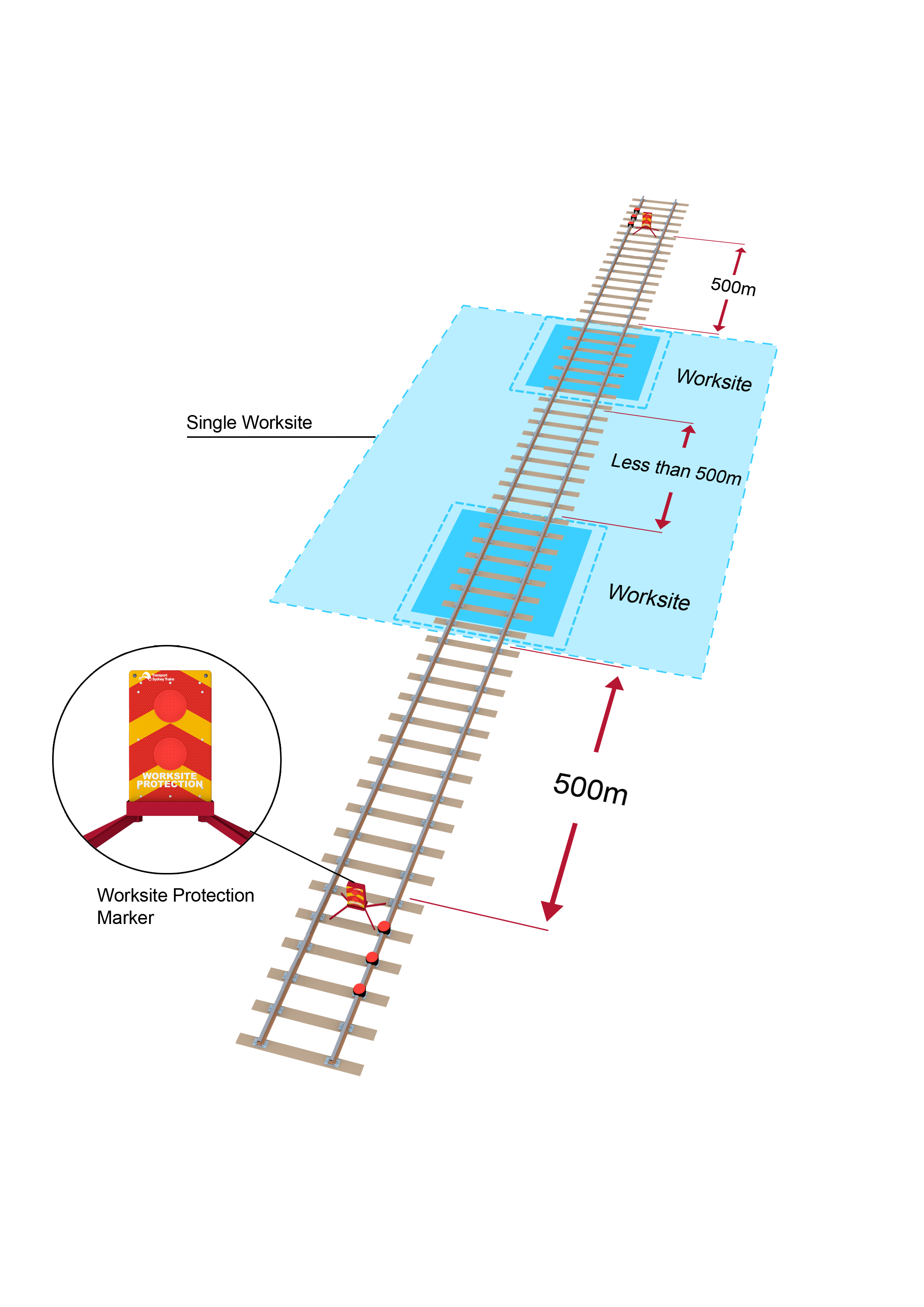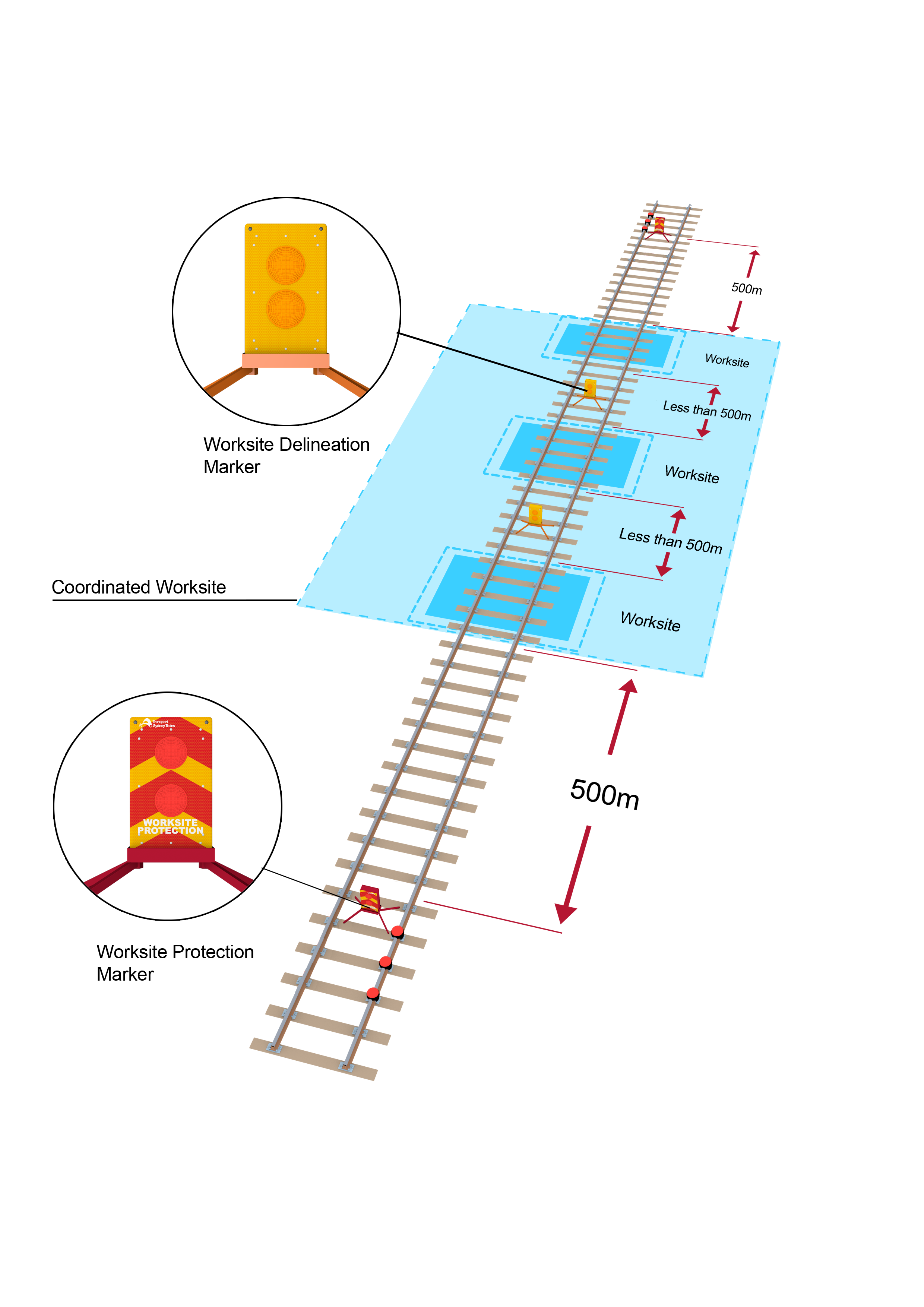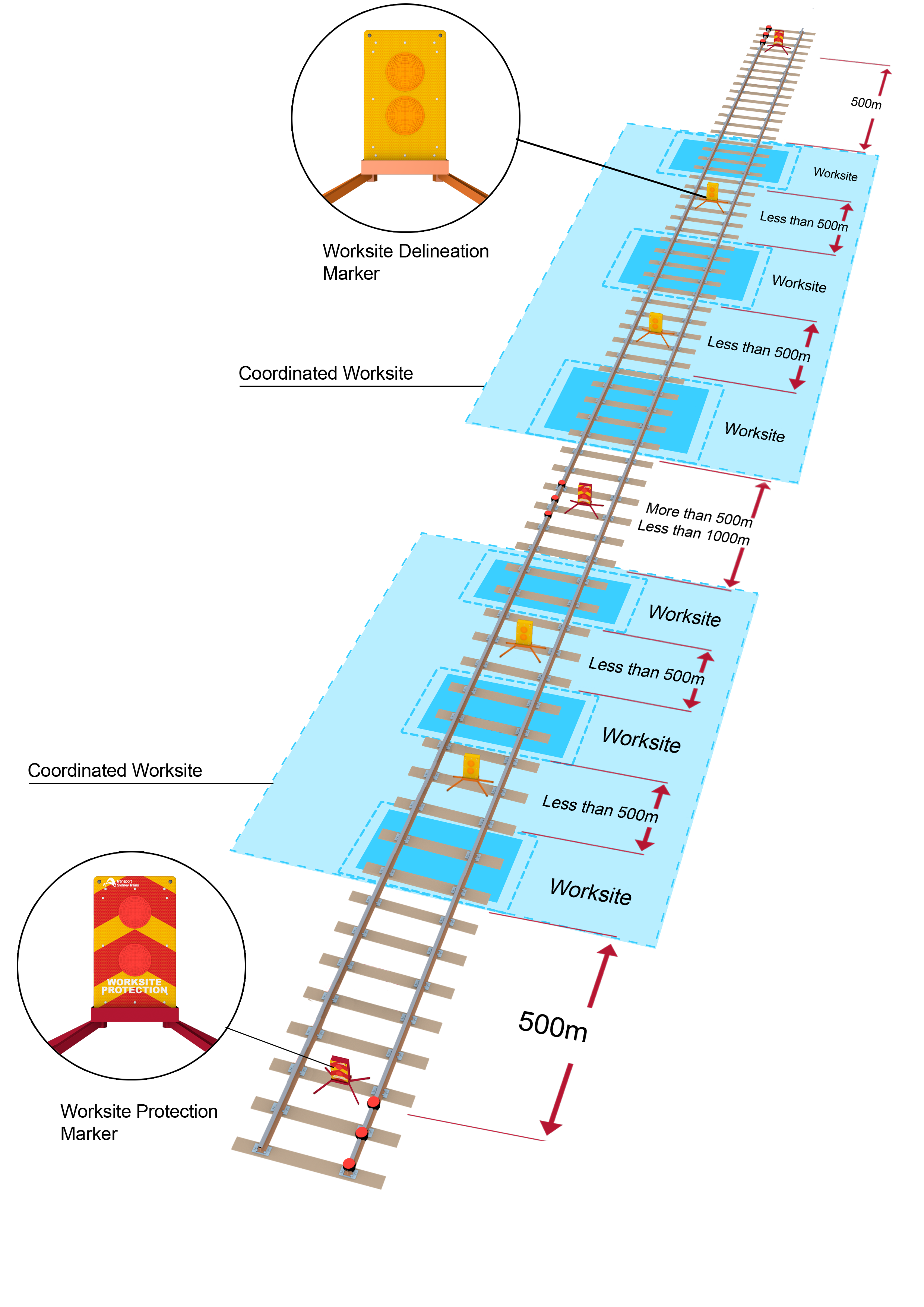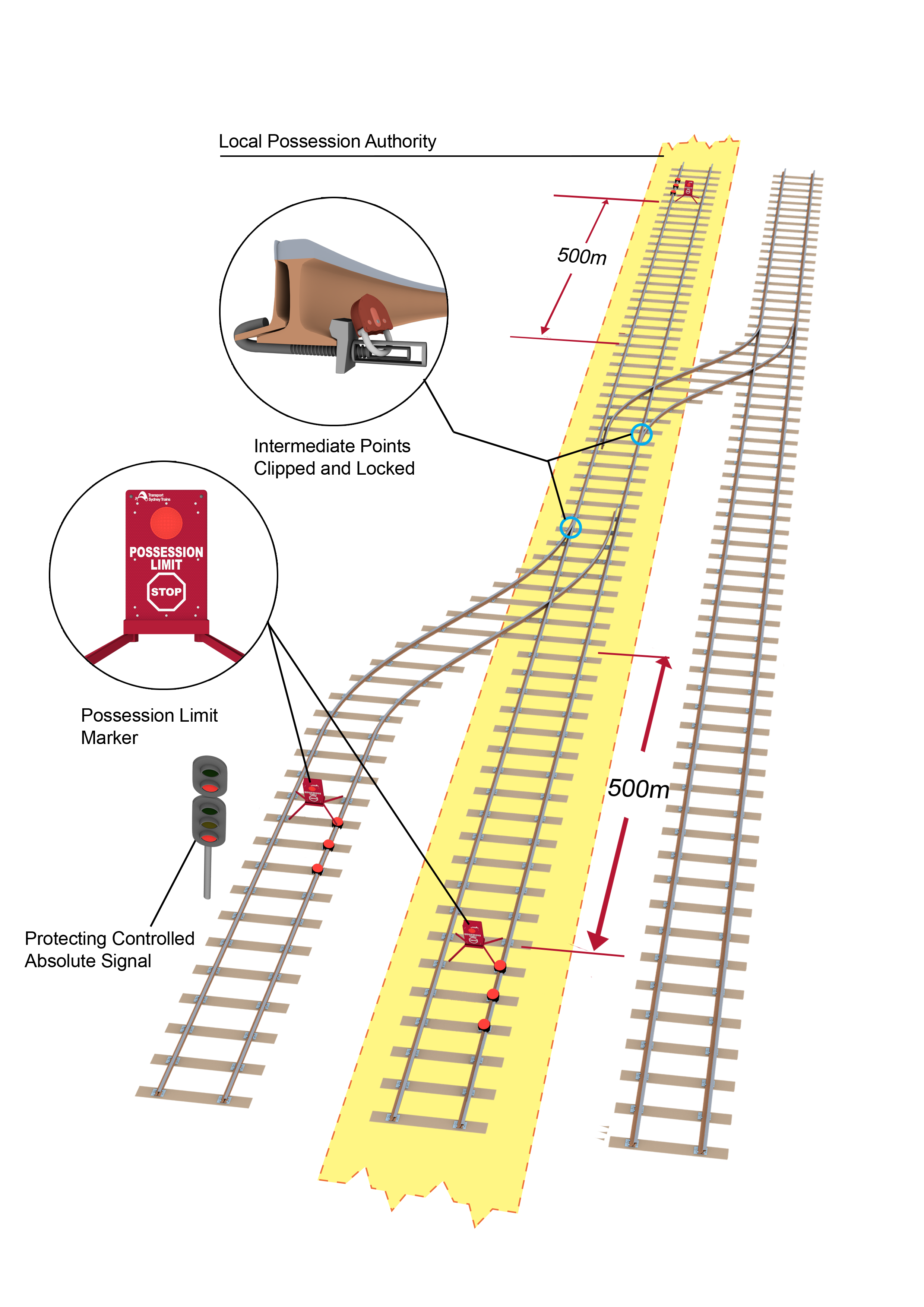Go to
Search this page
1
/
36
results in this page for the term
Description
This document describes the procedure for planning, implementing and managing a Local Possession Authority (LPA).
Not what you are looking for? See more Procedures
Introduction
A Local Possession Authority (LPA) is used to close a defined portion of track for a specified period.
Protecting the limits of the LPA
Possession Protection Officer
- Where practicable, safeguard the half-staffs at the limits of the LPA.
- Protect the LPA with three railway track signals and a possession limit marker placed at the specified limits of the LPA, or at 2500m from the outermost worksite if this is more practicable.
- If necessary, protect the worksites from rail traffic on other lines.
- If necessary, clip and lock points for intermediate access routes that allow entry to the LPA.
Protecting multiple worksites in the limits of the LPA
Possession Protection Officer
- Make sure the Coordinating Protection Officers and Protection Officers place the right protection.
- If changes are required to worksite protection, tell the Coordinating Protection Officers and Protection Officers to make the changes, and make sure the changes are carried out.
Protection Officers
- Make sure that three railway track signals are placed on each side of all worksites, as shown in the following examples.
- Make sure that worksite protection markers are placed in the middle of the four-foot, beside the railway track signals closest to each worksite.
- If worksites are more than 1000m apart, place the protection 500m from each worksite.
- If worksites are between 500m and 1000m apart, place the protection midway between the worksites.
- Make sure that worksite protection markers are placed in the middle of the four-foot, beside the middle railway track signal.
- If a worksite and a coordinated worksite are between 500m and 1000m apart, place the protection midway between the worksites.
- Make sure that worksite protection markers are placed in the middle of the four-foot, beside the middle railway track signal.
- Worksites less than 500m apart may be protected and managed as a single worksite.
Coordinating Protection Officers
- Worksites less than 500m apart may be protected and managed as a coordinated worksite.
- Make sure that each worksite inside a coordinated worksite has a Protection Officer.
- Make sure that approved worksite delineation markers are placed midway between worksites in the coordinated worksite.
- When advised by a Protection Officer that work has been completed:
- make sure that remaining worksites are correctly protected, and
- tell the Possession Protection Officer about the change to the coordinated worksite.
- If coordinated worksites are between 500m and 1000m apart, place the protection midway between the worksites.
- Make sure that worksite protection markers are placed in the middle of the four-foot, beside the middle railway track signal.
Managing rail traffic crossing the LPA
Possession Protection Officer
- Make sure that three railway track signals and a possession limit marker are placed:
- on the closed line, 500m before the crossover or turnout in each direction, and
- on the converging line that allows entry to the LPA area, at the signal protecting entry into the closed line.
- Make sure that the route through the LPA is clear of workers and their equipment, and is safe for the passage of rail traffic.
If rail traffic crossing is authorised
Signaller
- Get the Possession Protection Officer’s authority for the movement.
Possession Protection Officer
- Arrange for the removal of protection at the entry point of the route.
- When rail traffic has cleared the entry point make sure protection is replaced.
Returning the track to service
Possession Protection Officer and Protection Officers
- Make sure that rail traffic and equipment has cleared the line.
- Make sure that all workgroups have cleared the worksites.
- Make sure that possession limit markers/worksite protection markers/worksite delineation markers, railway track signals and point clips have been removed.
Possession Protection Officer
- Make sure that any emergency crossovers that have been used are returned to, and secured in, the normal position.
- When told that the line is certified fit for service, tell the Network Controller.
- Tell affected Network Controllers and Signallers about any restrictions on track use.
- If work is to continue under another work on track authority, tell the Network Controller and Signallers, and make sure that the worksite is protected prior to fulfilling the LPA.
- Fulfil the LPA:
- for the entire portion of track defined for the LPA, or
- progressively for one or more advertised track possessions included in the LPA.
Signaller
- Test all equipment affected by the LPA.
Keeping records
Network Controllers, Signallers and the Possession Protection Officer must keep details about the LPA and protection arrangements.
